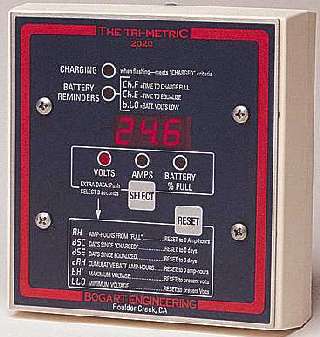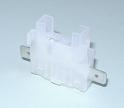Find out how to monitor your renewable energy system battery bank
Once you get beyond the simplest renewable energy system, it is necessary to include some battery bank monitoring equipment. Batteries are one of the most expensive and fragile components of a renewable energy system, and so it is essential that their status is carefully monitored. It is also very useful to track the charge coming in from the various sources in a combined system - usually photovoltaic solar panels and wind turbine generators - in order to see from where you are getting power.
Probably the best known battery system monitor is the Bogart Engineering Tri-Metric 2020 Battery System Monitor. This device displays battery voltage, amps, amp-hours, battery percent full, and five other data functions, and works with systems from 12V to 48V for around £100. Great value as it costs the same as one decent battery and should increase the lifetime of your batteries:

Bogart Engineering have now introduced the new PentaMetric Battery Monitor which offers even more capability than the TriMetric.
Another alternative if you are on a limited budget is a simple digital multimeter. Available from just £5, a digital multimeter can be used to measure the voltage of your battery bank, and the current (amps) being put into or drawn from the batteries when being charged or under load.



